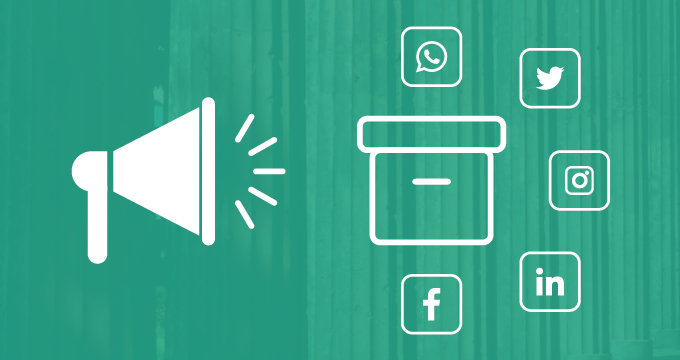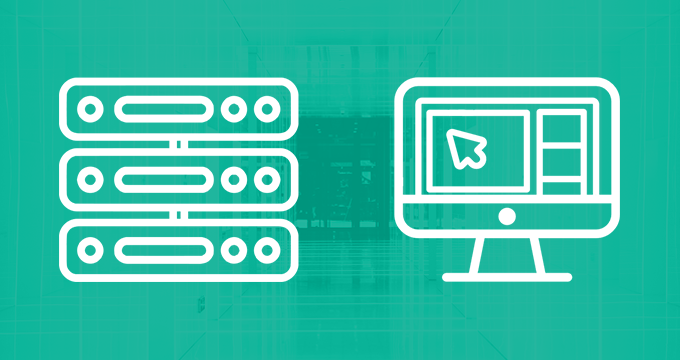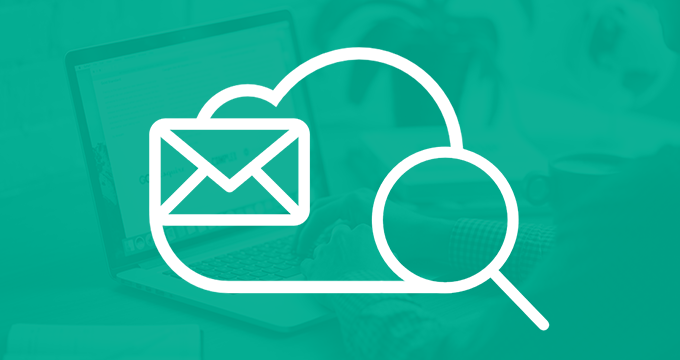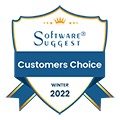Email archiving is more than 20 years old now, but there are still companies that are ignoring all the benefits and are reluctant to adopt it.
But as email archiving and communication regulations are becoming stricter than ever, archiving is becoming more and more important and mandatory, even for unregulated industries.
And although many think of email archiving as “just retaining emails”, it’s much more than that. In reality, email archiving benefits go way beyond that.
In this article, we are exploring 18 ways email archiving can help make your life easier.
What Is Email Archiving?
Email archiving is the process of securely storing email messages and their attachments for long-term preservation. It involves creating a central repository where emails are saved in a structured manner reducing the load on mail servers.
Once archived, these emails can easily be searched and retrieved when needed, even after long periods.
Essentially email archiving helps store emails that you don’t need immediate access to, but lets you find them when necessary.
Why Is Email Archiving Important?
Email archiving isn’t just a nice-to-have option for your organization. For many industries, it’s a mandatory practice, but even organizations that don’t require email archiving opt to include it in their operation.
Why?
There are many reasons why an organization would archive its emails.
1. Regulatory Compliance
The number one reason why every organization needs to archive their emails. With strict regulatory environments, archiving has huge demands, especially in the financial, healthcare, government, and education industries.
With more than 9,000 compliance regulations in the US only, for an organization to legally operate, it needs to abide by specific email retention laws and freedom of information acts that mandate keeping records and archives of all email communication in an organization.
2. Ediscovery
With email being the main communication channel in the corporate world, whenever a lawsuit is started, email records are what the court requires of businesses. Either to protect a business or even incriminate a rogue employee, keeping records is crucial.
With millions of emails, it’s pretty hard to provide the exact conversations being requested by the court. It takes time, energy, and huge costs to run through all emails and most organizations fail to provide the requested information.
But organizations employing an email archiving system can utilize its ediscovery capabilities to easily search through millions of emails in minutes and apply legal holds on said emails to prevent their deliberate deletion, alteration, and destruction of evidence.
Ediscovery not only speeds up the process of providing communication records but also saves millions of dollars for businesses. MarketWatch reported that some Fortune 1000 companies spend $5-10 million annually on external teams doing their ediscovery.
3. Storage Management
Many organizations believe that storing email on live servers or using built-in archiving features of their email platforms can solve their email accumulation troubles. In reality, one in every four organizations experiences storage management growth of 25% per year.
This growth is largely attributed to email use and ever-growing attachment size. To cobat this, many organizations impose email quotas to prevent infinite storage growth, but this causes important emails to be deleted to meet the quota.
By storing your emails in a separate email archive off your email server, you save space, keep all important emails on your server, and don’t have to delete any emails saving yourself from accidentally deleting important files.
4. Retention Policy Management
Email archiving solutions help you to ensure that your emails are retained in accordance with legal and regulatory requirements. To aid this, creating and managing email retention policies is a critical component of email archiving.
Email retention policies reflect email retention laws in your industry and dictate how long emails need to be retained, which emails are considered sensitive or confidential, and appropriate procedures for email deletion.
Having a proper email archiving policy will help you stay compliant, retain important emails, and manage data much better.
The best part is. Most email archiving software like Jatheon let you create multiple email retention policies and leave them to run automatically, taking all the worries and manual work out of your hands.
5. End-User Monitoring and Analysis
Although most messages your employees exchange are business-related, sometimes there’s more to it. Email archives help you define policies and set rules about what can be said in emails. If an employee uses a specific keyword in their emails it can notify you about employee misconduct.
Advanced monitoring algorithms like these can help you draw different conclusions about how your employees communicate, detect rogue employees, and prevent conflicts before they escalate.
This is very useful for your HR team to detect workplace disputes and harassment or for your legal team about illegal acts like classified information sharing or misconduct.
6. Employee Productivity
Locating a single elusive email amongst millions of emails is a nightmare for your employees and most of the time that email search needs to take priority over other tasks.
Having a centralized email archiving system improves your employee productivity, especially your IT department as they can easily search the whole archive with advanced filters, pinpoint the needed information in seconds, export it, and forward it. All of this in a few minutes instead of hours.
An email archiving solution also lets you automate plenty of tasks like email retention policies, deletion, and categorization which let your team focus on more important tasks.
7. Information Requests
Legislation such as FOIA, Sunshine Laws or FIPPA allow anyone to access any record that is held or controlled by an institution on any issue and is subject to the exclusions and exceptions set out in the act. These data records can be anything, including communications about procurement, employees, finances, and budgets.
As most of these communications take place through email, if you work for a government agency, school, or a hospital, information requests are a regular part of your work.
This means that these emails need to be held for a long time and should quickly be delivered when called for not to create a huge backlog.
Having an email archiving solution speeds up the whole process letting you meet short deadlines with the use of email filters and hold data for long periods of time.
8. Prevention of Data Corruption
Keeping data on live email storage services is alright if you don’t have many emails and don’t intend to keep them for a long time, but as emails keep piling up and years keep passing, the risk of data corruption just keeps rising.
Data corruption is a reality, no matter how diligently you store your electronic information. However, one of the major benefits of email archiving is the long-term storage of data with no corruption or errors.
Companies archive emails precisely because they want these records to be there when they need them.
9. Cost-Effectiveness
Implementing an email archiving solution initially might be considered an unnecessary cost, but think about how much money you are saving in the long run.
- Non-compliance fines are huge and keep on increasing
- Ediscovery cases take up your resources and have high costs
- Information requests often require dedicated employees
- Data loss or corruption can cost you your whole business
- High costs of paying for an increase in live server storage
And all of these costs are in the millions which can be reduced dramatically with an email archiving solution.
10. Customizable Information Access
Having a huge number of employees and a hierarchy in your organization means that not everyone can have the same access to crucial information. This is very hard to manage without a dedicated solution for your email administration.
A high-quality email archiving solution comes with customizable user roles and permissions. This means that you can organize email access the way you deem best – by creating custom roles or limiting access to end users.
Regular employees will benefit from being able to freely delete email from their mailboxes, knowing that there is a perfectly organized and easily searchable repository that they can rely on while you can rest assured that crucial information is only available to select employees.
11. Unified Repository
When your emails and messages are scattered across different channels and servers it becomes quite difficult to manage them, search for important information, and keep track of what is being communicated.
With an email archive, your whole organization’s communication records which are distributed across various devices can be centralized in one place.
Having a centralized “information vault” gains even more importance when we think about all the alternative channels that today’s organizations use for business communication – internal chat and record-keeping systems, WhatsApp, Social Media, Zoom video calls, phone calls, to name a few.
All these channels contain business records and, as such, need to be retained. Modern archiving software can archive these new data types alongside email and allow integrative search through everything at once.
12. Data Verification
Since email can be used as evidence, it’s vital that your organization can prove that the emails have been archived in their original state and remained intact while in the archive.
96% of litigators who work in the ediscovery industry say that the time and date stamp within metadata is the most vital information for the court. These authenticity and message integrity verification features help prove that a specific email has not been manipulated or tampered with, minimize legal risk, and help with ediscovery or internal investigations.
Email archiving software automatically store emails as they are and restrict anyone from tampering with them ensuring the original date and content of the email are correct.
13. Disaster Recovery
If your network fails you will be in a position where you must retore your database for the continuation of your business. This is why most companies want to add a second layer of data protection and security.
Email archive setups aren’t the same as ordinary backups, they allow organizations to have uninterrupted access to information and maintain business continuity in case of a disaster.
They provide you with a backup of all of your communications with the ability to restore them quickly. It’s like having two separate locations for your data which comes in handy more often than you think.
14. Simple Upgrades and Migrations
With email archiving, any future email server upgrades or migrations are made simpler. It works like this: because your archives are essentially a different storage location, your current email database is, in effect, much smaller.
All of your old emails are stored in the archive, and this enables IT to move the database much more quickly, with increased security and less of a risk for data corruption.
Email archiving, then, acts as a way of streamlining your current email database for greater portability and security.
15. Improved Network Performance
If you are keeping all of your emails on a server you might have noticed its performance and speed decreasing, be that in searching, downloading, forwarding, or sending emails, having too much data on your server will clog up your communication channels.
The problem gets even worse with each new employee that joins your company as you can’t just delete their data once they leave, you have to retain it, exponentially slowing down your server.
Storing old emails in an archive will lift off weight off of your company server making all email actions much faster while still keeping old emails for compliance reasons. If you are using a cloud archiving solution, even better as you won’t need to bother with on-premise devices and setups.
16. Corporate Knowledge Management
Email archiving offers significant advantages to organizations, even in unregulated industries. Your email archive serves as a valuable repository of corporate knowledge, providing insights that are increasingly recognized as indispensable.
From identifying response times to pinpointing key team members and popular discussion topics, this data unveils crucial organizational insights that may otherwise remain elusive.
Beyond its analytical benefits, email archiving is vital for proactive data management. It safeguards a wealth of information, from customer and employee communications to records of contacts and tasks.
Properly securing and managing this data ensures its accessibility across the company, preserving the company’s long-term reputation and operational efficiency.
17. Easy Integrations
Email archiving solutions typically integrate with all major email platforms. Some contain features like the Outlook plugin, which let users access the archive directly from Outlook, which saves time and allows them to use a familiar interface.
Most of these solutions provide 0 friction when deciding to use them and can usually integrate with other communication channels your organization is using.
18. Audit Trail
Having an email archive means that admins and compliance officers can perform archive audits. This provides them with a read-only log used to track activities in the archiving software.
Authorized staff members can see audit trails through a historical view of the activities of specific users within a specific period. Basically, they can see what people were trying to do in the email archive.
If an employee attempts to access the information they’re not authorized to access, this activity will be recorded in the audit trail. Admins and compliance managers can check whether specific keywords have been searched, which users looked for what data, whether they attempted to modify certain retention rules, or whether somebody tried to overstep their authority.
This gives your business evidence in a legal dispute and a way to monitor unwanted activities in the archive.
Where To Start With Email Archiving?
Starting off with email archiving and implementing it in your organization may be a daunting process, but it’s well worth the time and effort.
You can follow this guide to get started with email archiving:
- Access your needs – Understand why you need an email archiving solution. Is it for compliance, data management, ediscovery, or a combination of different needs? Take a look at the list above to understand what an email archive can do for your organization.
- Review regulations and federal laws – Research regulations in your industry and make sure you understand the laws that apply to you, especially how long you need to retain emails.
- Choose an email archiving solution – Look at different best email archiving solution lists and compare their pros, cons, and pricing, aswell how their features stack up to your needs.
- Migrate data – Once your email archiving solution is set up you will need to transfer all of your emails into its database for safekeeping. Make sure to set up automated data storage systems.
- Create email retention policies – Establish a clear email retention policy your whole organization will follow. Automate the task to your solution and define different retention dates depending on circumstances.
- Train your team – Make sure that your legal, HR, IT, and compliance employees, as well as stakeholders, understand how to use the archive and its rules. Make sure to set up roles and responsibilities for your core archiving team.
- Inform your employees – With a new policy on email retention the whole organization needs to understand what archiving means for them and how to use it.
- Review and improve – Email archiving is not a one-time task. Regularly review and improve your archiving strategy to meet evolving regulatory requirements and organizational needs
By following these steps, you can streamline the implementation of email archiving in your organization, ensuring compliance, effective data management, and a smoother overall workflow for your team.
| Experience all the benefits of email archiving with Jatheon’s cloud archiving solution built for businesses of all sizes. Stay compliant, speed up your ediscovery, and retain all of your business data in one easy-to-use solution. |
FAQ
How long do emails stay in an archive?
This depends on the company’s email retention policy, which is defined based on the company’s industry, organizational policies, and compliance laws that control email retention. Most email archiving solutions come with the ability to retain email permanently or let administrators and compliance officers set retention rules to control email retention. After a retention policy expires, emails are deleted automatically.
What is the best way to archive old emails?
It’s best to use email archiving software to automate the process of capturing, searching, and storing email. There are other, less advanced options, like utilizing cloud storage services, local storage, email filters and rules, or PDF conversion. The choice of the best archiving method depends on your exact needs, the existing IT infrastructure, company size, and legal requirements.
What does it mean to archive an email?
When an email is archived, it is moved from your active mailbox or folder and stored in another location for long-term retention and future reference. For organizations, this means that all the employee emails get moved to a centralized location (an email archive system), where administrators and compliance officers can view and manage them. Employees will typically have access to their own archive and will be able to restore archived emails to their original mailbox.
Do archived emails get deleted?
No, the emails you archive aren’t deleted. They are simply moved from your active mailbox to another location. The archiving system will automatically delete them after a retention policy expires. If you are an end-user, you typically won’t be able to control this because archived emails need to stay in the system as long as they are under an active email retention policy, which is controlled by your company.
Does archiving emails save space?
Yes, archiving can help save space in email servers and client applications. When you archive emails, you typically move them from the active mailbox or folder to a separate storage location, such as an archive server or an email archiving tool. This process reduces the size of the active mailbox, freeing up storage space and improving the performance of the email system. Archiving systems often use data compression and deduplication techniques to further optimize storage usage.








